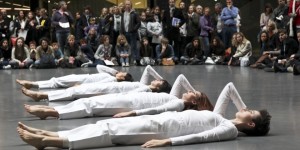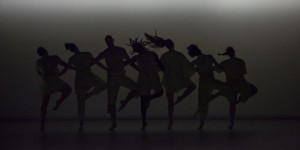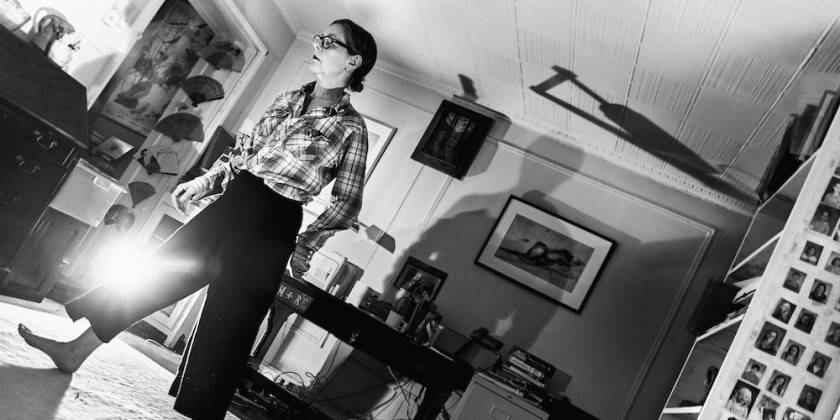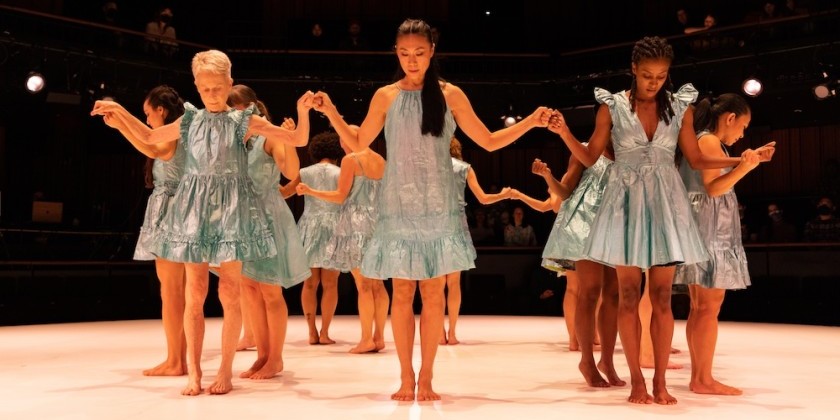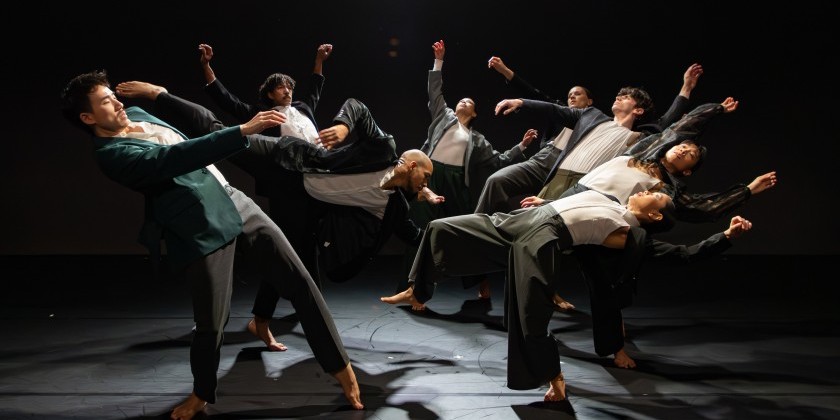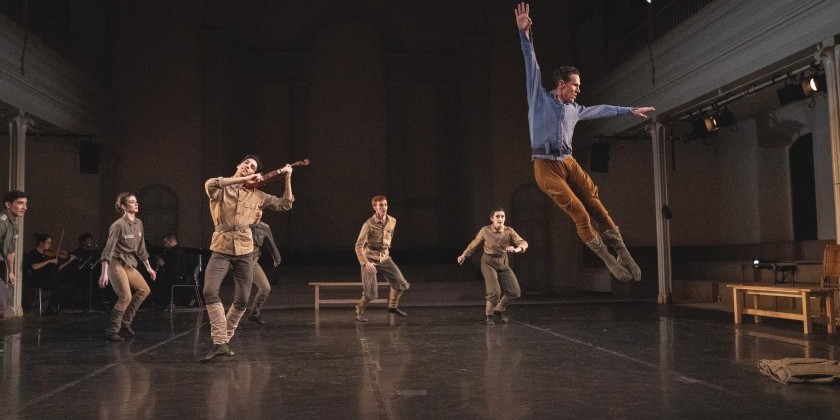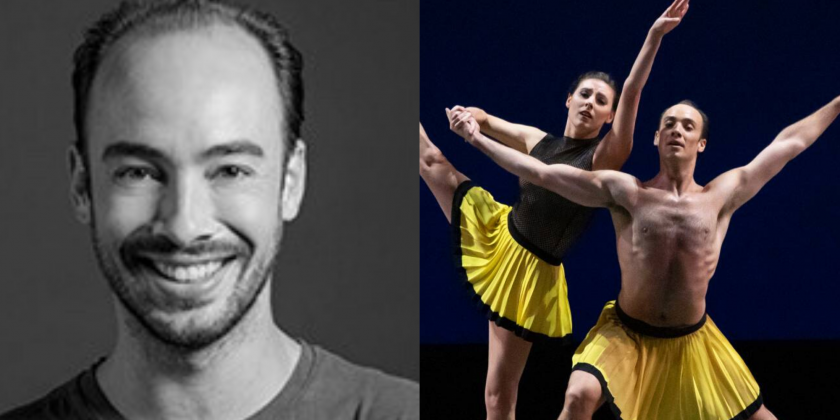IMPRESSIONS: Big Dance Theater’s “The Road Awaits Us” at NYU Skirball Center
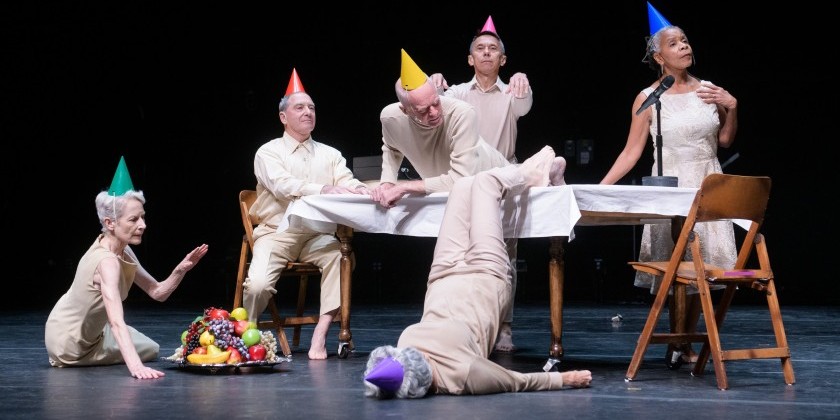
November 9, 2019
Choreography: Annie-B Parson
Set design: Lauren Machen // Sound design: Tei Blow, Benjamin Grant // Costume design: Enver Chakartash
Lighting design: Joe Levasseur, Adam Carree // Video design: Deborah Johnson/CandyStations Contributing Director/Choreographer: Paul Lazar, Elizabeth Dement
Art reflects life. Watching Big Dance Theater’s The Road Awaits Us, an evening of three works presented at NYU Skirball Center, life these days, according to Annie-B Parson, might just be a big farce.
In the duet ballet dance (a premiere), the curtain rises on a pink, winged love seat. The wonderfully deadpan Elizabeth Dement and Natasha Diamond-Walker begin clad in barely-there gray biketards. Gradually, the actor-dancers add tiny tutus, flowered headbands, blush-colored bubblewrap aprons, and foil skirts with metallic helmets. When Diamond-Walker dons a kilt-like fabric scrap, Dement throws on a huge pink mess of a tutu, and a reference to ballet’s romantic era – specifically, La Sylphide – emerges. These clever costumes by Enver Chakartash accompany movements both recognizably balletic — fourth position of the feet, Taglioni arms, floating bourrées — and others more abstracted — a partnered swoon but with the backside as a base upon which to lean.
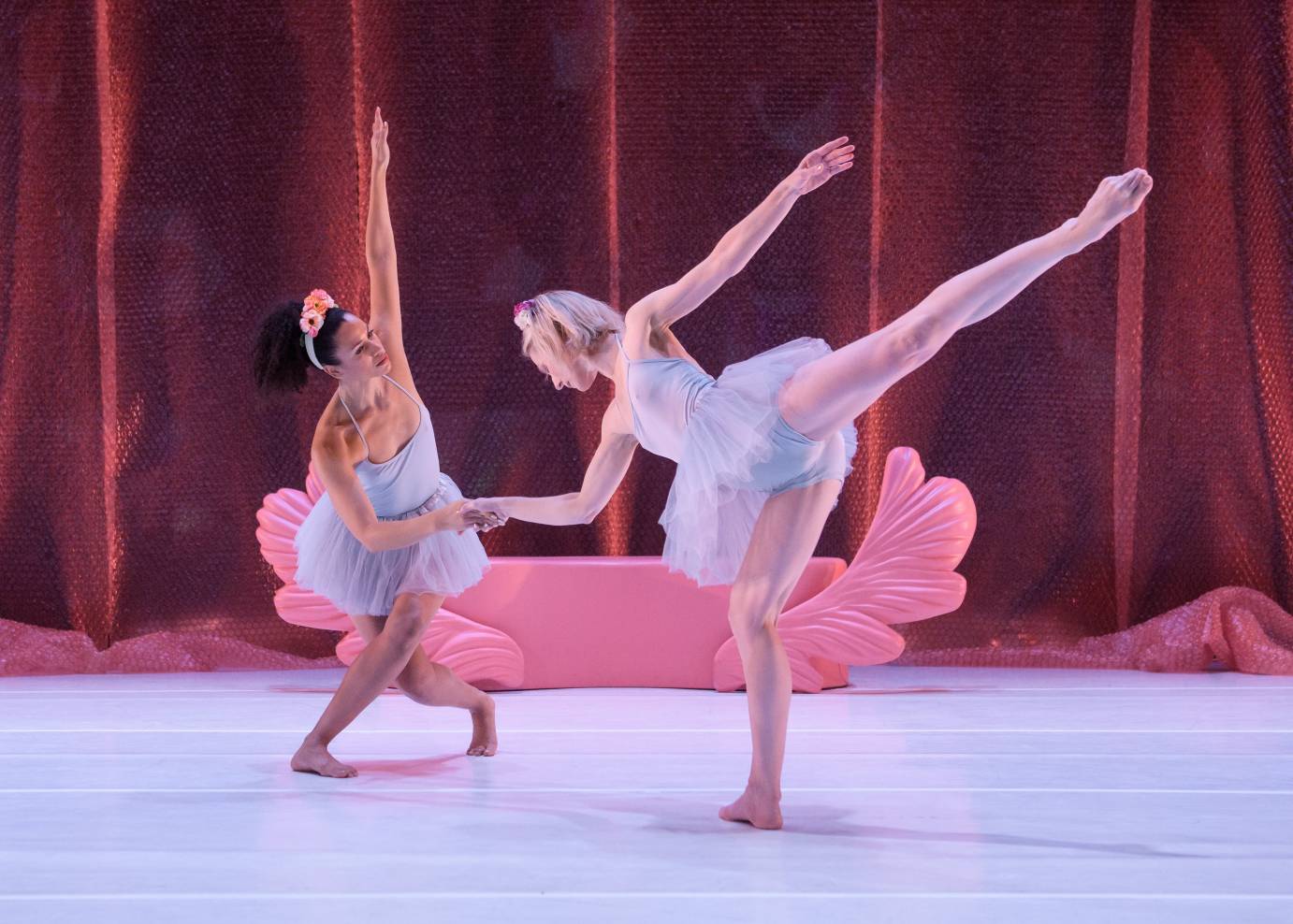
Parson deconstructs steps, relationships, and narratives from 19th-21st-century ballet. If, in the 1832 romantic ballet La Sylphide, the ballerina’s bourrée demonstrates her character as a spirit of the air, Dement’s backward skitter here delivers just the facts — a levitating action without meaning, simply beautiful on its own.
Fractured segments of dance, text, and video reflect our digital age in the way they present as bytes. The work draws us in not via any balletic phrasing, but from the pairings of isolated elements. When a Siri-like voice narrates an analysis of La Sylphide’s synopsis or the two dancers converse like they’re in Dumb and Dumber, the juxtaposition of the movement and words decontextualizes ballet and also entertains through its preposterousness.
By jumbling these raw scraps of movement material with unlikely elements, Parson asks us to muster meaning out of the combinations or take them for what they are — coexisting bits of data.
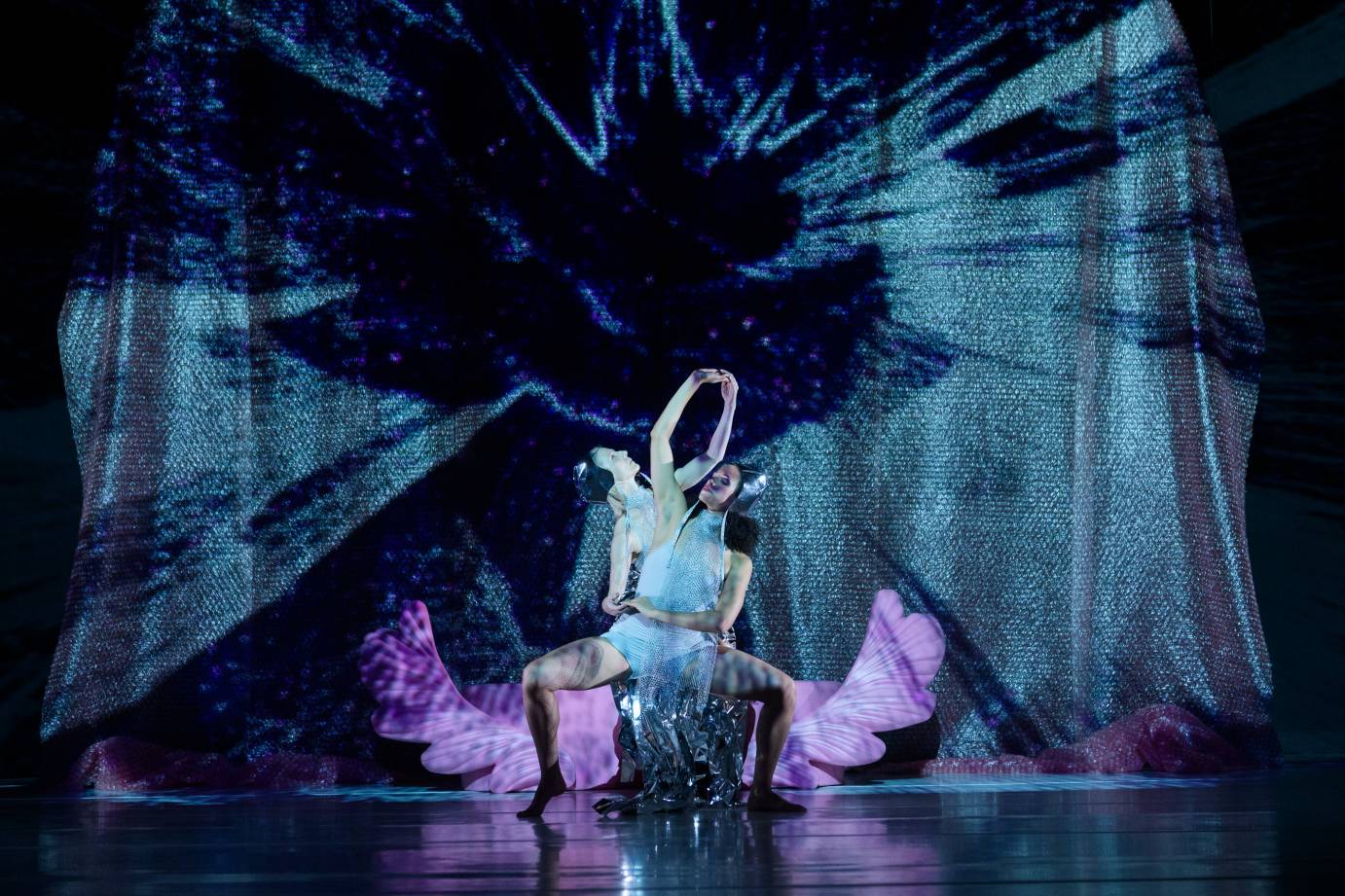
Throughout the evening, Parson exposes artifice. She removes the stage’s wings, displays costume changes, and segues from the first work to the next (Paul Lazar’s solo Cage Shuffle: redux), the dancers passing the figurative baton on stage. To emphasize the act of performance intentionally extinguishes its magic.
Lazar, a consummate performer, carries us along on a whirlwind ride. He executes Parson’s gestural choreography while reciting a selection of one-minute lectures by John Cage, the order of which is shuffled before the piece commences.
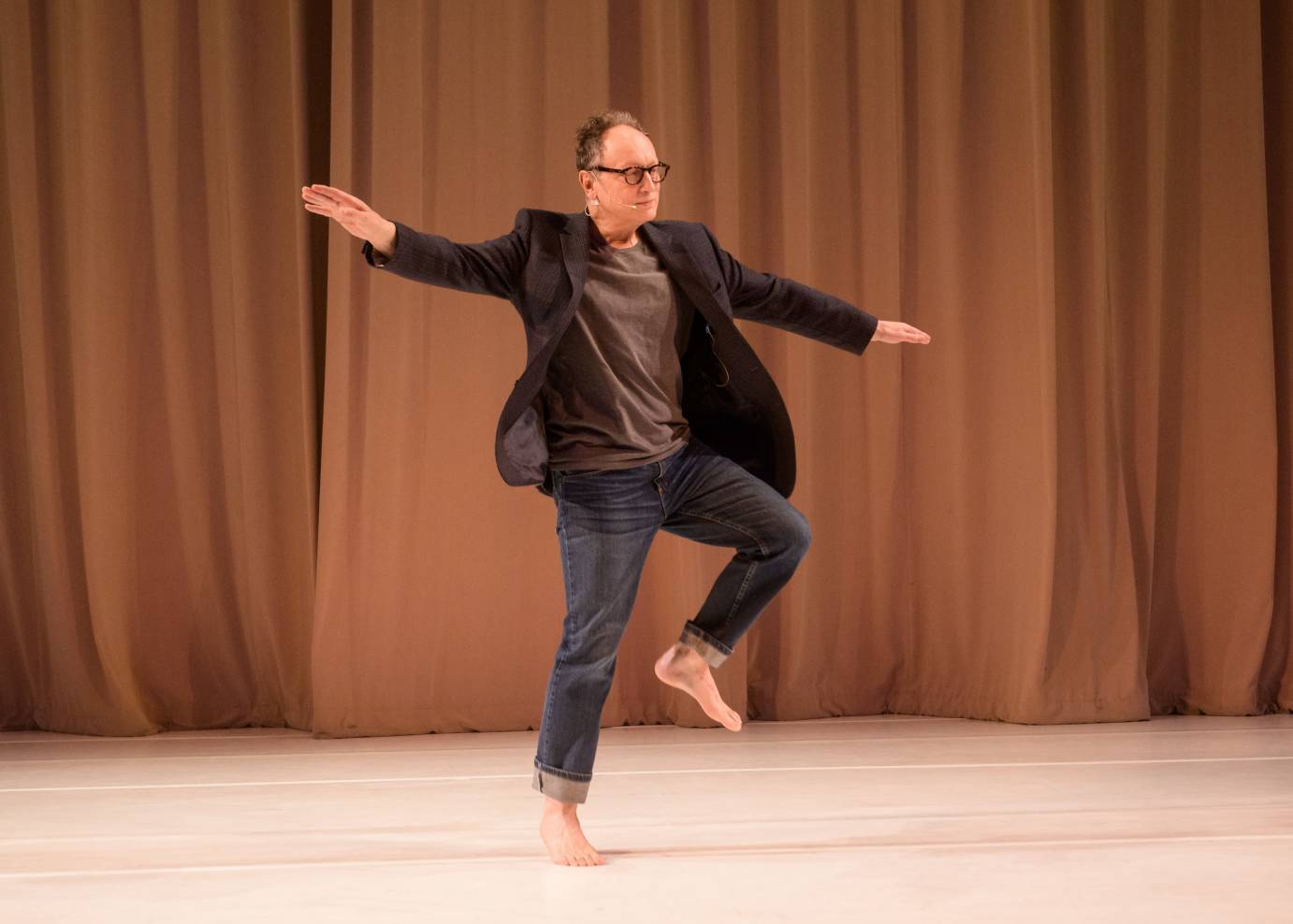
Aware of the arbitrariness of the gestures’ alignment with the text, we revel when the pairings match (a story of a butterfly told as fingers, crossed in an X, bob vertically), and we delight in instances of incongruity (when the same motif reoccurs alongside Cage’s existentialist words, like “purposelessness” or “nothing is accomplished”). The unpredictable display entertains Lazar, too. He smiles and chuckles at the marriage between his physical and verbal tasks.
Cage Shuffle: redux depends upon this moment in time. Never again will this dance manifest in this exact fashion. Maybe, through the improbable, ephemeral, and exposed, Parson offers us reality.
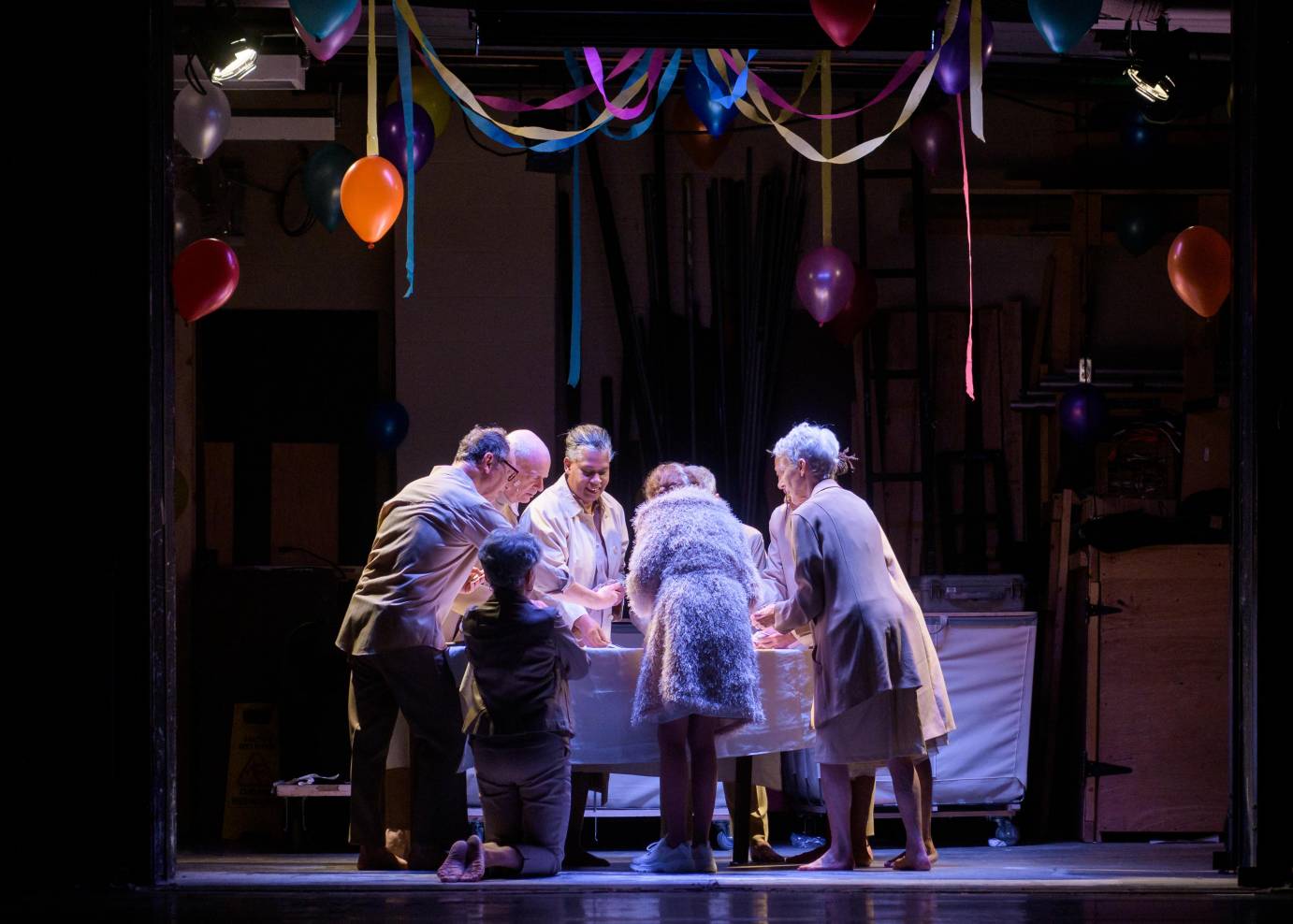
Originally commissioned by Sadler’s Wells for the Elixir Festival in 2017, The Road Awaits Us invites us into an absurdist birthday party inspired by Ionesco’s The Bald Soprano but with a Chekhovian heart. The attendees are London and New York’s dance elders: Brian Bertscher, Douglas Dunn, Betsy Gregory, Meg Harper, Paul Lazar, Bebe Miller, Keith Sabado, Sheryl Sutton, and Black-Eyed Susan.
These characters set the scene for a birthday celebration, strapping on pointed party hats and furnishing the stage with a table and platter full of comestibles. They descend upon the table —literally. They lie upon, melt off, and sprawl beneath it, as though an entirely typical way to behave.
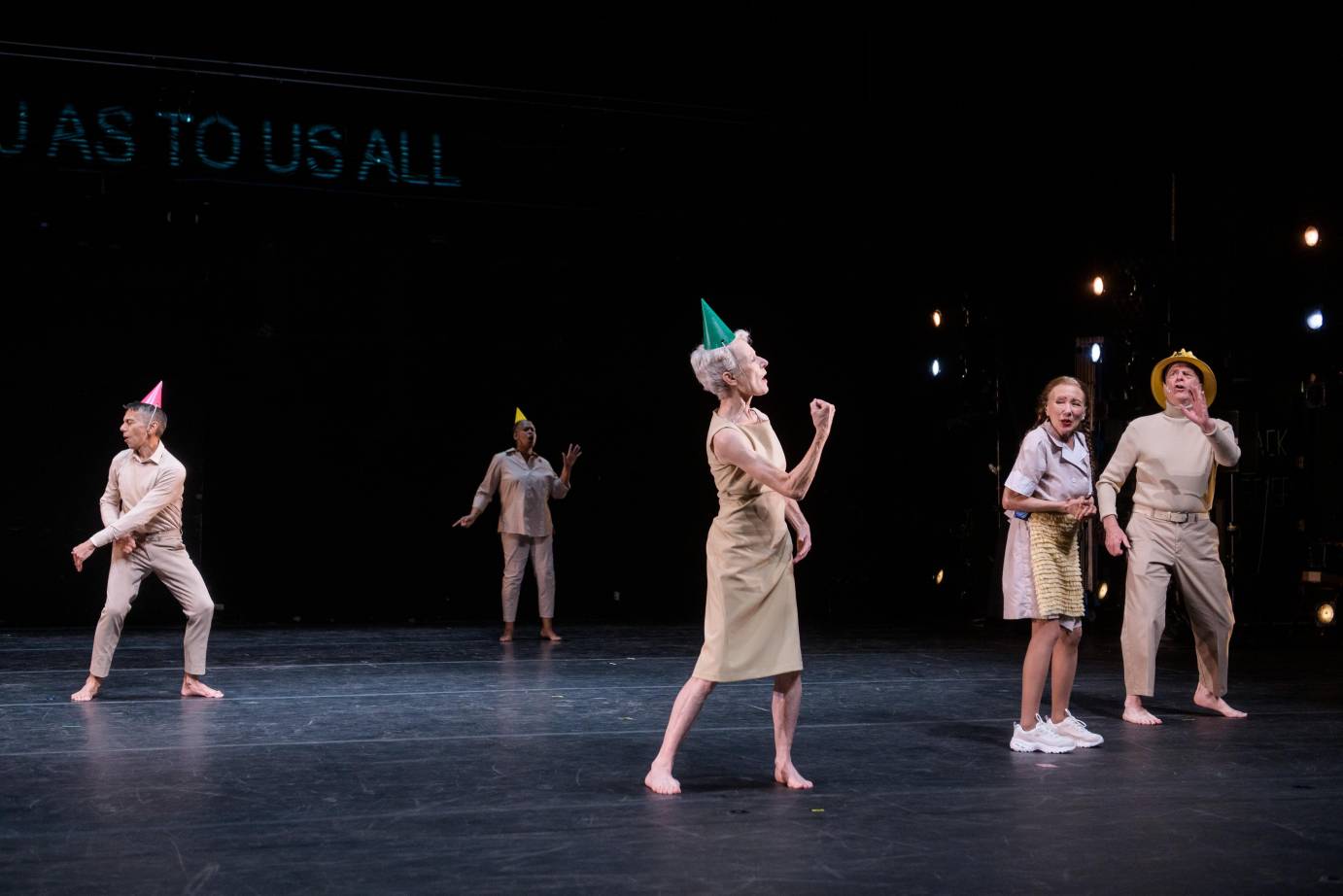
How ridiculous to see these majesties, mid-way through the piece, acting like toddlers at storytime. But ah, we know grown-ups who do behave like children. How apt, in this time of political and environmental disarray, for Parson to present such a ludicrous display.
This multifaceted work does more than just reflect the preposterousness of our current climate. These dance titans take charge of the stage space while wearing time’s eroding diminishments. Meg Harper’s limbs extend linearly outward, and her back curves in contraction. As she does, we see the echo of the former Cunningham language her body once spoke. Keith Sabado warmly aids the performer Black-Eyed Susan in rising back to standing. Their fragility is our fragility, and a birthday may be nothing more than a stop on the circular path from dependent to virile and back again.




